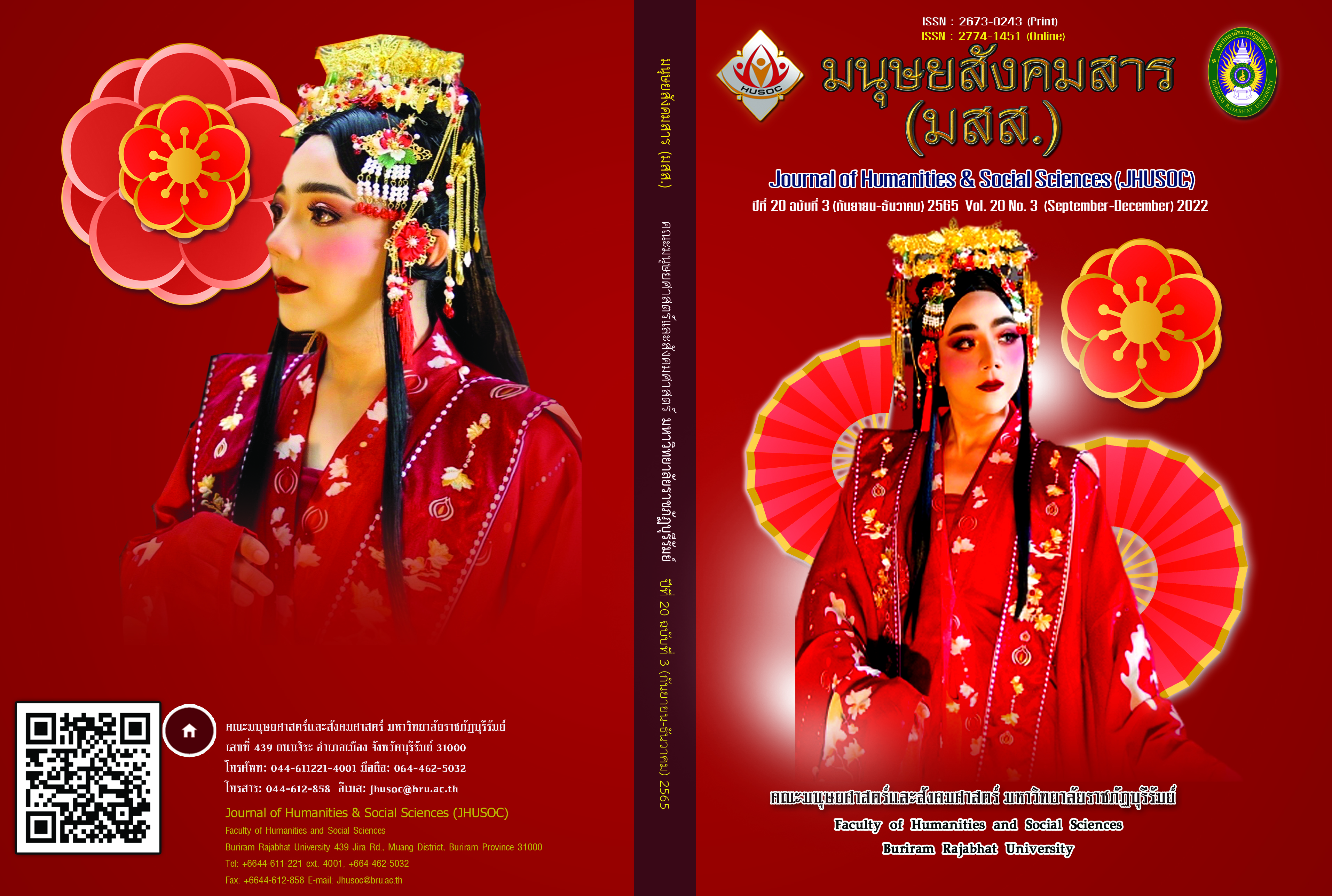The Development of Chinese Language Skills and Desirable Characteristics through Writing Grammatical Structures (存现句) of 12-Grade at Prasarnmit Demonstration School (Secondary)
Main Article Content
Abstract
The purpose of this research was to study the quality of the learning model through the practice of writing the given grammar structure, to develop the Chinese language skills of grade 12 students through the practice of writing grammatical structures, and to develop the characteristics of through the practice of writing grammatical structures. And to study the satisfaction of the grade 12 students towards the learning model via the practice of writing grammatical structures. The research results revealed that 1) the specified learning style passed the criteria evaluated by the experts in all areas. 2) The target students' Chinese language skills were significantly higher than before using the learning model at the statistical level of .05. 3) Characteristics of the students who learned through the practice of writing the given grammar structure met the criteria specified in all assessment aspects, including discipline, eagerness to learn, and commitment to work. 4) Their satisfaction with the learning model was overall at the highest level. Having considered each of the following items, it was found that their satisfaction with the activities specified by the teacher, the establishment of the students’ interest in learning, and the learning model contributed to improving their Chinese skills was at the highest level. However, their satisfaction with the activities assigned by the teacher to strengthen the students’ discipline, and the activities assigned by the teacher to enhance their learning characteristics was at a high level.
Article Details

This work is licensed under a Creative Commons Attribution-NonCommercial 4.0 International License.
เนื้อหาและข้อมูลในบทความที่ลงตีพิมพ์ในวารสารทดสอบระบบ ThaiJo2 ถือเป็นข้อคิดเห็นและความรับผิดชอบของผู้เขียนบทความโดยตรงซึ่งกองบรรณาธิการวารสาร ไม่จำเป็นต้องเห็นด้วย หรือร่วมรับผิดชอบใดๆ
บทความ ข้อมูล เนื้อหา รูปภาพ ฯลฯ ที่ได้รับการตีพิมพ์ในวารสารทดสอบระบบ ThaiJo2 ถือเป็นลิขสิทธิ์ของวารสารทดสอบระบบ ThaiJo2 หากบุคคลหรือหน่วยงานใดต้องการนำทั้งหมดหรือส่วนหนึ่งส่วนใดไปเผยแพร่ต่อหรือเพื่อกระทำการใดๆ จะต้องได้รับอนุญาตเป็นลายลักอักษรจากวารสารทดสอบระบบ ThaiJo2 ก่อนเท่านั้น
References
Bureau of Academic Affairs and Educational Standards. (2010). The development and evaluation the desirable characteristics based on the basic education Core Curriculum B.E. 2551. Ministry of Education.http://www.edu.ru.ac.th/images/edu_files/curriculum51_assess.pdf [in Thai]
Chaiyasaree, P. (2021). Learning by doing. https://mcpswis.mcp.ac.th/html _edu/cgi-bin/main_php/print_informed.php?id_count_inform=20871[in Thai]
Dhiravegin, L. (2006). The role of China and Chinese language in the current century.https://mgronline.com/daily/detail/9490000074640
Hanphicai, S. (2019). Development of learning achievement in local education course using learning by doing. Lawarath Social E-Journal, 3(1), 51 - 63. [in Thai]
Kaewkrajang, W. (2014). The writing ability enhancement by using the conceptual plot. The Research Fund Service report of the 2557 B.E. fiscal year. Silpakorn Educational Research Journal, Rajamangala University of Technology Suvarnabhumi. [in Thai]
Promsorn, N. (2014). Systematic effective learning management. https://www. gotoknow.org/posts/486382 [in Thai]
Saepun, W. (2017). A study of circumstances and problems on Chinese language teaching and learning in a secondary school, Yala Province. Journal of Yala Rajabhat University, 12(Special Issue), 126 - 136. [in Thai]
Sruangto, D. Somwong, P., & Pornsin, S. (2019). Learning activity management on the relationship between two-dimensional and three-dimensional geometric figures by using learning by doing activities for Mathayomsuksa I Students. Rajabhat Rambhai Barni Research Journal, 2(13), 191 - 197. [in Thai]
Viraneteekul, C. (2016). How to learning by doing (Active Learning) to improve the quality of education in Thailand. http://www.dsdw2016.dsdw.go.th/ doc_pr/ndc_2560- 2561/PDF/8364e/8364นายฉัตรชัย%20วีระเมธีกุล.pdf


